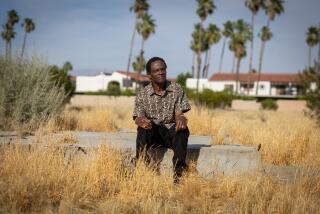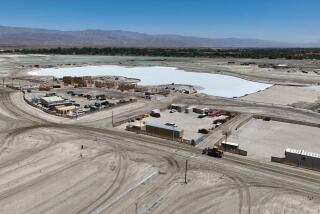Council Backs Redevelopment of 252 Freeway Corridor
Weeds, broken bottles and old furniture are all that remain in parts of the Southcrest area in Southeast San Diego.
The children who once played stickball or jump rope have left. The state told their parents to leave in 1972, and then razed their homes in a 1.1-mile-wide corridor to make way for a freeway.
But California 252 hasn’t been built. And Tuesday, the San Diego City Council gave its approval to use the freeway corridor as part of a 300-acre Southcrest redevelopment project.
A pivotal element in the redevelopment effort will be determined April 24 when the state Transportation Commission votes on whether to sell the right-of-way to the City of San Diego.
Bounded by Logan Avenue, Interstates 15 and 5 and Gamma and 44th streets, the Southcrest project is expected to revitalize a run-down, predominantly minority area. Southcrest residents and officials with the Southeast Economic Development Corp. (SEDC) hope the project will inject new life into the area through new housing and businesses.
“The future of the community really depends on bringing the ownership of that corridor back to the city,” said Reese Jarrett, SEDC executive vice president. He said the redevelopment agency is willing to pay $3 million for the highway right-of-way.
Councilman William Jones, whose district includes Southcrest, said city acquisition of the California 252 corridor is crucial to redevelopment. Jones said Southeast San Diego already is the only part of the county that has four freeways--Interstate 5, 15 and 805 and California 94.
“The only way we can turn around the social and economic condition of Southcrest is for the city to piece (the area) back together again,” he said. “This community has been seriously impacted by a decision some years ago to build a freeway through it.”
Southcrest residents, the City Council and SEDC have been involved in heated debates since last year about what redevelopment should include in Southcrest. Residents have objected that early plans for condemning homes were unfair and insensitive, and that SEDC’s plans to put 29 homes per acre on the California 252 corridor would be overcrowding.
The squabbling prompted the council to delay votes on redevelopment in October and February. But the problems were soothed when city staff members decided which homes and businesses could be condemned by redevelopment, and when the council limited to 22 per acre the number of homes to be built on the corridor.
More to Read
Sign up for Essential California
The most important California stories and recommendations in your inbox every morning.
You may occasionally receive promotional content from the Los Angeles Times.










